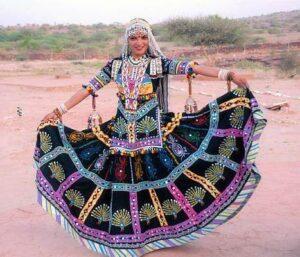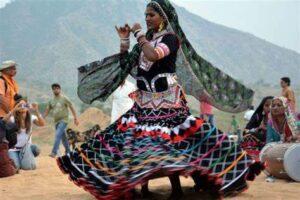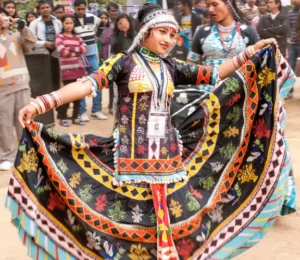Kalbeliya Dance of Rajasthan
Kalbeliya Dance of Rajasthan is also famous the dance of snakes. Kalbeliya dance is considered to be a very important part of the culture of Rajasthan. In this dance, this dance is performed by the people of Kalbelia community which is the community of Rajasthan.
This community is known for its dance art and famous for its music art. It is not only an entertainment medium, but it also reflects the culture, heritage and identity of this community, their way of life. UNESCO included it in the Intangible Cultural Heritage in 2010, which further boosts its popularity.

What is Kalbelia community
in Kalbeliya Dance of Rajasthan the Kalbelia community is a nomadic tribe in Rajasthan that catches snakes and even treats people bitten by snakes. They are very skilled in dancing towards the community, their dance is like a trick like snakes.
This community depends on catching snakes and extracting their poison, so snakes have great importance in their lives. This community is known as snake catchers. These communities carry drummers, flutes and also use instruments like saddles. These instruments play an important role in their music. These communities also catch snakes and show their game.
Origin of Kalbeliya Dance of Rajasthan and its History
The exact time of Kalbeliya Dance of Rajasthan is not remembered, but it is believed that this dance is centuries old. This dance is famous in different parts of Rajasthan such as Ajmer, Pushkar, Jodhpur etc. Kalbeliya dance is performed during festivals and also during religious rituals. In the 20th century, Kalbeliya dance has also made its mark outside Rajasthan.
Features of Kalbeliya Dance of Rajasthan
Mobility is a key feature of this dance, the women of this community dance very well, it dances like the gait of snakes when they move their hands and feet. So, the movement of their hands, the movement of the feet and the rotation of the waist are very attractive. Hands and feet and waist together captivate the audience.
These women twist their bodies as if a snake is walking. It acts like a snake. On the side of this community, Kalbelia community uses a black Gagra and choli in the dance and also wears shiny jewelry. The body of the dancers is very well coordinated with the music. When women dance, she rotates very loudly and their hand, feet and waist coordination is very good.
Costumes of Kalbeliya Dance of Rajasthan
In Kalabelia dance, women wear very heavy jewelry, which includes silver jewelry, waistband jhumkas, at this time, women wear black Gagra and choli while dancing. Their hair is decorated with flowers and pearls in a very traditional way. There is a live performance in this dance, which keeps freshness.

Music and instrumental differences used in Dance of Rajasthan
Several instrumental interoperations are used during the Kalabeliya dance of Rajasthan. These are very important instruments which include dholak, khanjari, manjira, khanjari, manjira etc. Bin, also called Pungi, is used to catch snakes.
Cultural Significance of Kalbeliya Dance of Rajasthan
People come from far away to see Kalbelia dance. so, it has become very popular among the dance, it is called in fairs to demonstrate this dance. People are very happy to see the dance, this dance reflects not only the culture of this community but also the diversity of colorful culture and folk art of Rajasthan. Kalbeliya dance is considered an important part of the cultural heritage of Rajasthan.

Changes in Kalbeliya dance in contemporary times
There is a lot of change in this community, some communities have presented it nationally and internationally so that it has increased its prevalence. the contrary, some communities are preserving their tradition and beliefs while doing it in an old way. The community is also beginning to be presented on forums.
conclusion
Kalbeliya dance is considered as a major cultural heritage of Rajasthan, it is not only an entertainment medium, but it also presents the strong folk art of this community and Rajasthan. It also symbolizes a lifestyle, The level music and ornaments used during the Kalbeliya dance famous to create a unique art.
